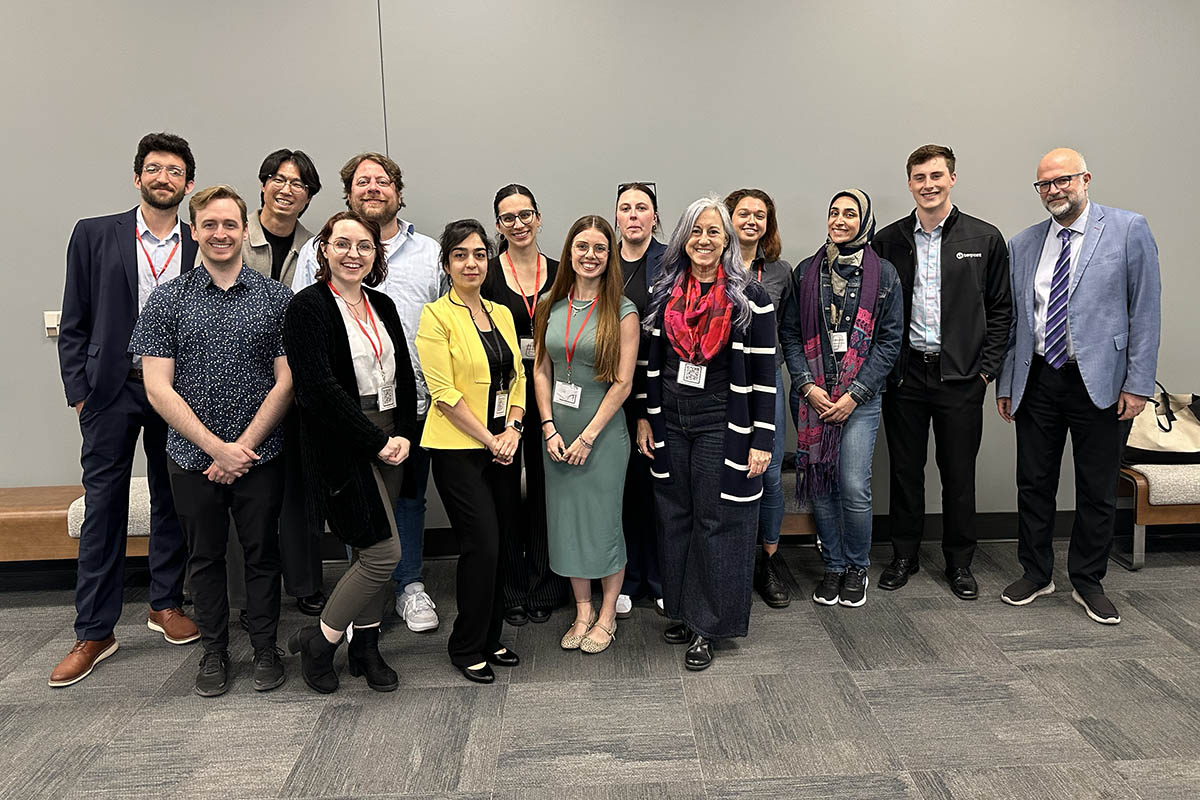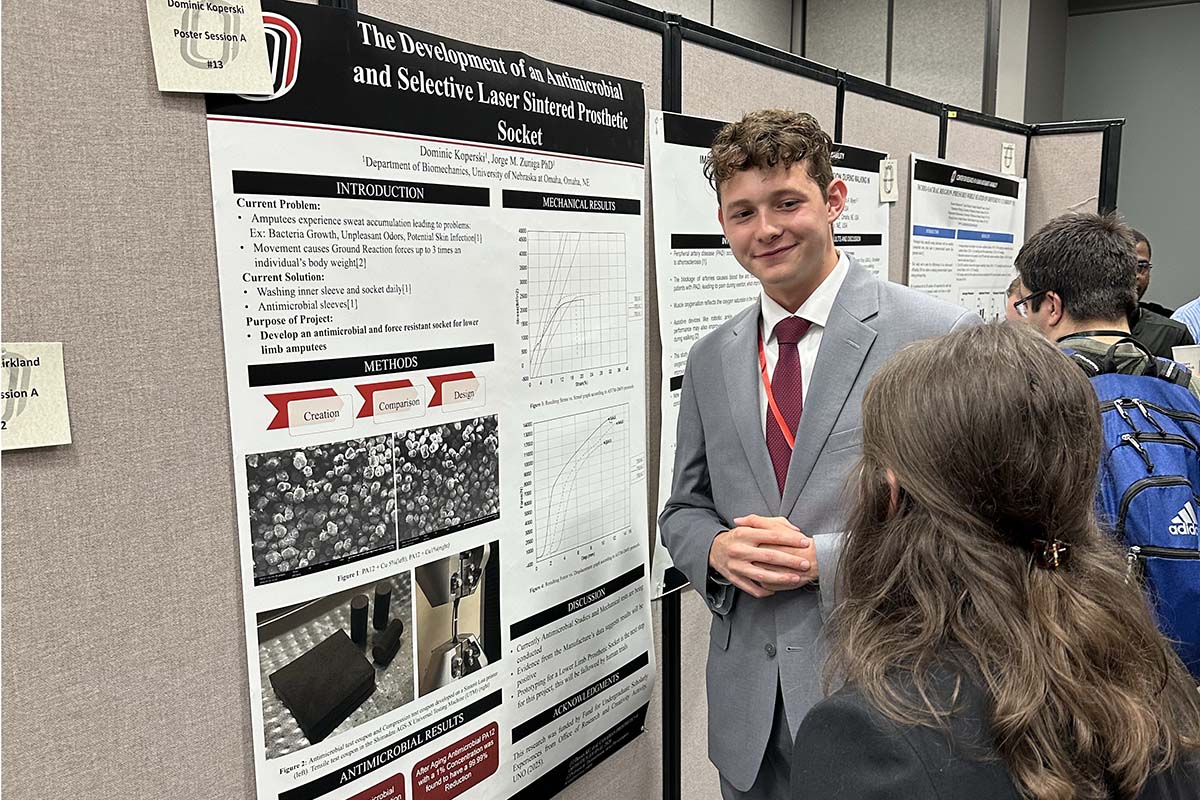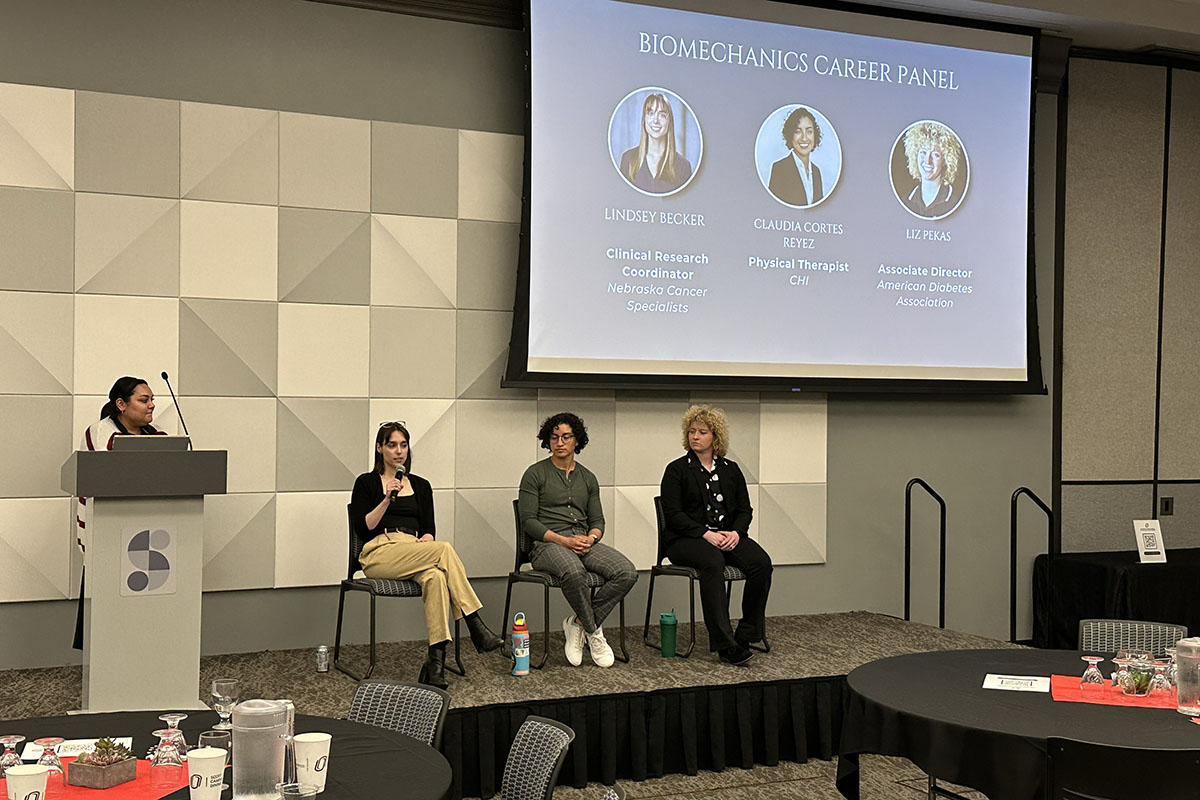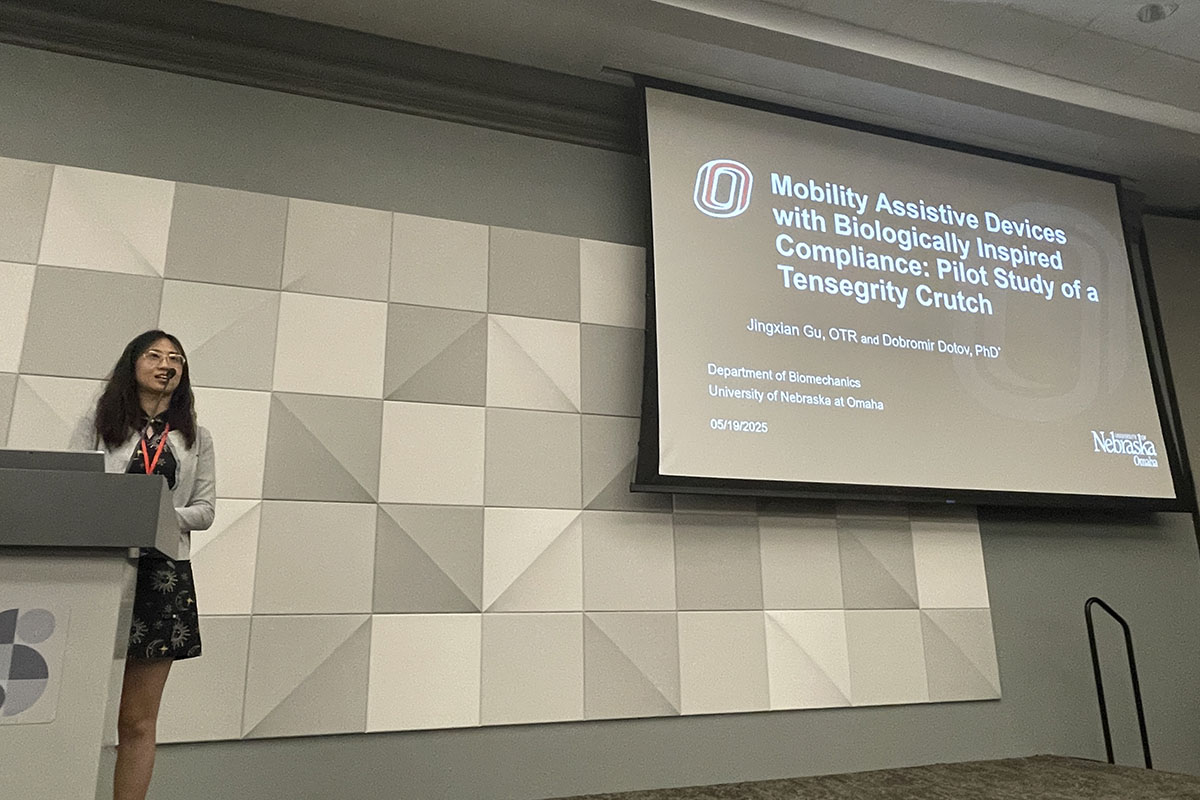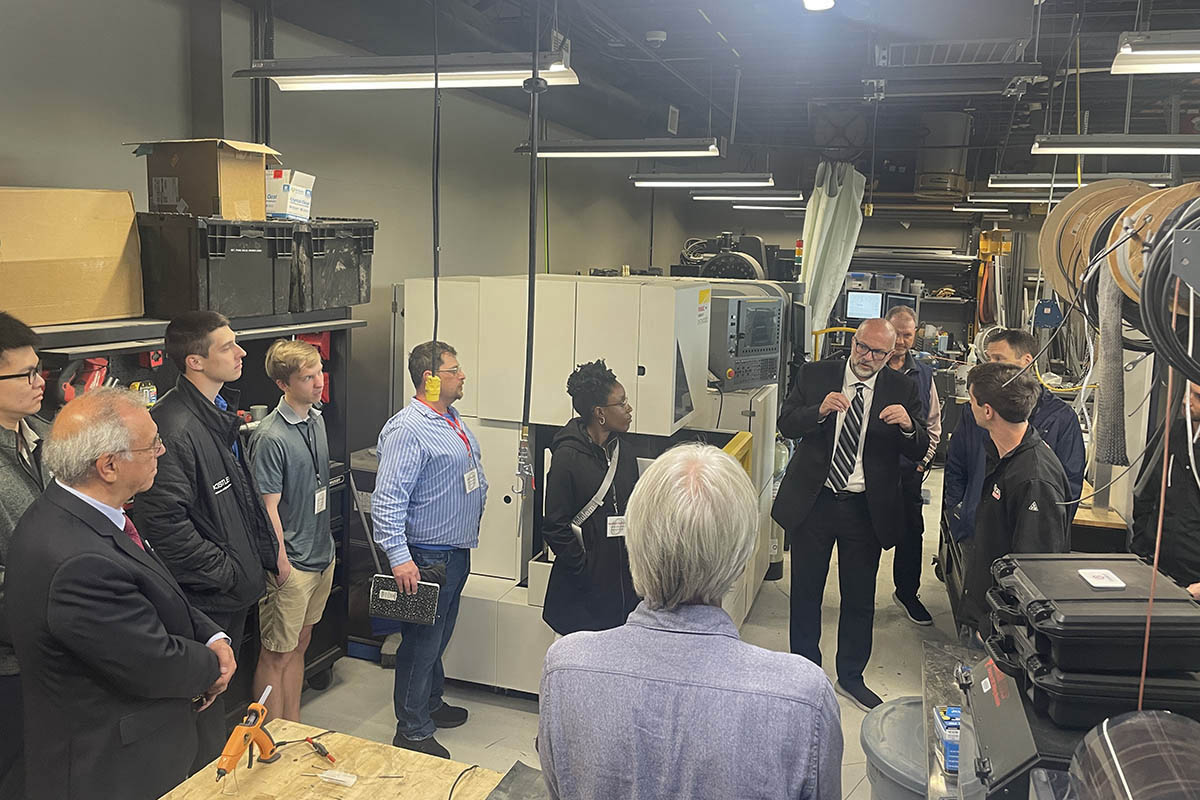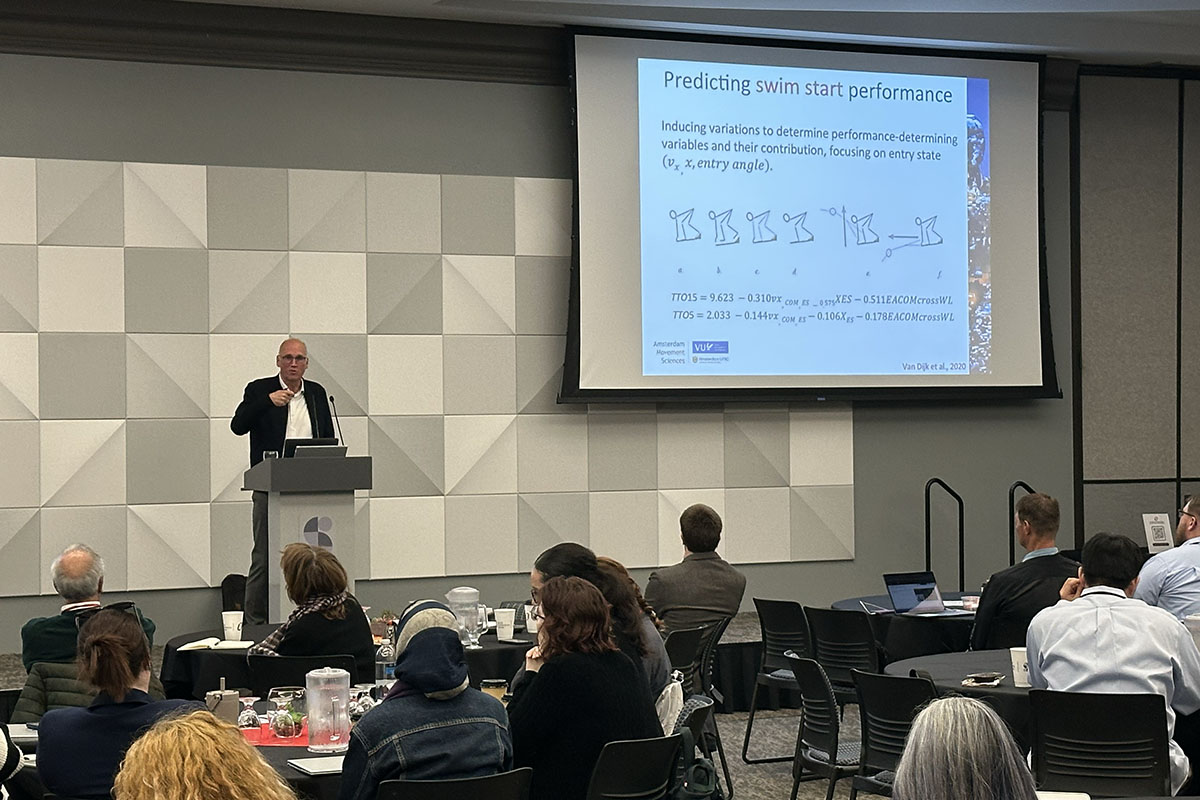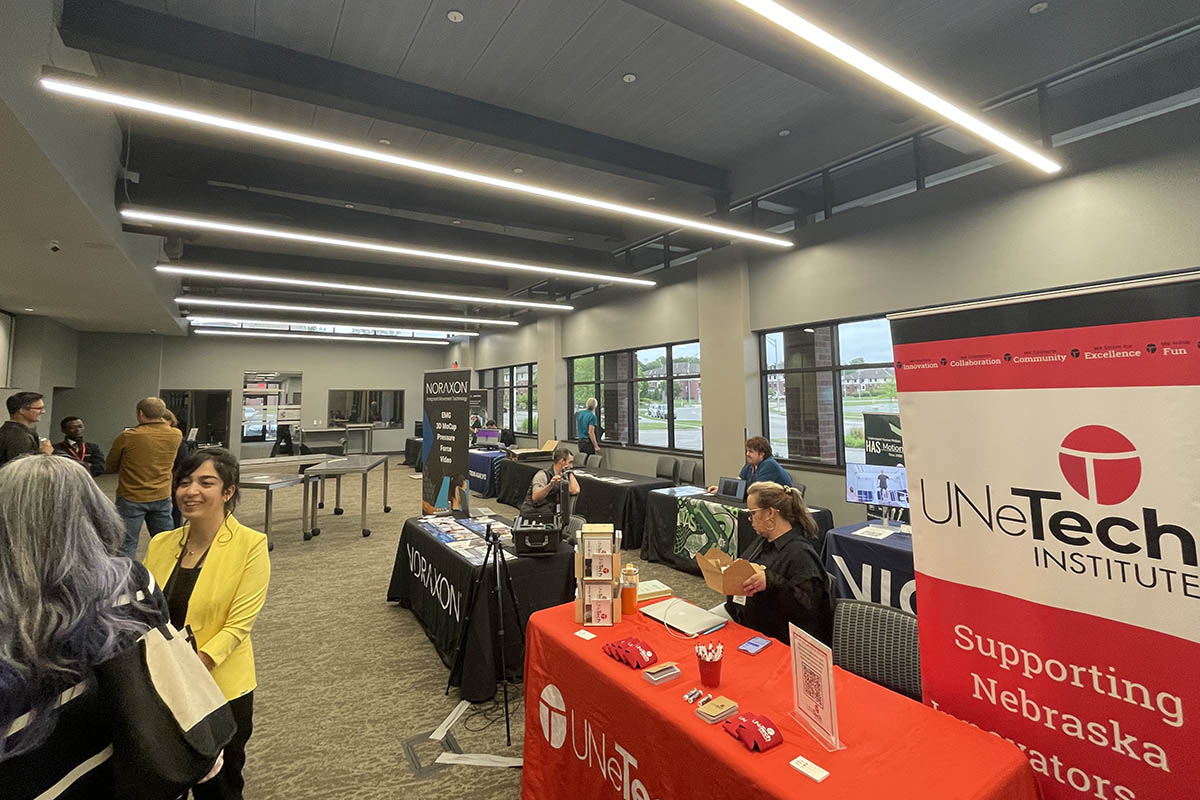Conference Marks 10 Years of Biomechanics Research and Impact
UNO Biomechanics recently marked a milestone with the 10th anniversary of the Human Movement Variability Conference, showcasing UNO’s impact in movement science and highlighting the latest advances in the field.
- published: 2025/06/19
- contact: College of Education, Health, and Human Sciences
- email: unocehhs@unomaha.edu
Highlights
- The Human Movement Variability Conference recently marked its 10th anniversary alongside the 6th annual Great Plains Biomechanics Conference, showcasing UNO’s impact in movement science.
- The event brought together over 100 international experts, students, and industry partners for keynote lectures, research presentations, lab tours, and mentoring opportunities.
- UNO Biomechanics continues to shape the future of movement science through global collaboration, student-centered research, and innovative approaches to rehabilitation and performance.
This May, UNO Biomechanics marked a milestone with the 10th anniversary of the Human Movement Variability Conference. Held at the Scott Conference Center, the two-day event highlighted the latest advances in Biomechanics across clinical, sports, and rehabilitation contexts.
What began as a vision to elevate UNO’s role in biomedical research has grown into a globally recognized event. Six years ago, the conference was combined with the Great Plains Biomechanics Conference to broaden its scope and connect an even wider range of students, researchers, clinicians, and industry partners. Today, the joint conference continues to reflect UNO’s international impact through diverse presentations and collaboration across disciplines.
As the founder of UNO Biomechanics, Nick Stergiou, Ph.D., reflected on what it means to reach this milestone. “I have always aspired to establish a platform at UNO for the sharing of ideas and research discoveries with both international and U.S.-based scientists, as well as relevant industry professionals,” he said. “Our conference offered this platform, and reaching this milestone is a remarkable accomplishment.”
“I have always aspired to establish a platform at UNO for the sharing of ideas and research discoveries with both international and U.S.-based scientists, as well as relevant industry professionals,”
He added that over the past decade, prominent visiting scientists have consistently recognized the strength of UNO’s research, facilities, and academics. “They have all become our ‘ambassadors,’ disseminating information about our excellence globally.”
Both conferences are designed to center students, offering a supportive and engaging space to present research and connect with peers and professionals. Topics ranged from soft rehabilitation robotics and ankle exoskeletons to gait variability, vascular mechanics, and new algorithms for analyzing movement patterns. Sessions included morning keynotes, student-led podium presentations, and two poster sessions, followed by lab tours and a career panel.
This year’s keynote speakers included Peter Beek, Ph.D., of Vrije Universiteit Amsterdam and João Paulo Vilas-Boas, Ph.D., from the University of Porto. Their talks offered insight into pressing questions in the field today, from understanding individual differences in motor learning and performance to improving the accuracy of biomechanical data collection in challenging environments like water.
Reflecting on his visit to UNO, Dr. Vilas-Boas praised the Biomechanics Research Building, calling it the most advanced Biomechanics facility he has ever seen. “It’s simply the best,” he said. “The day I visited the lab felt like the first day of the rest of my scientific life. It’s incredibly impressive—the enthusiasm, the work being done, the outcomes being produced. I was already impressed by UNO’s reputation but seeing it in person made me fully passionate about it.”
He also noted the uniquely close-knit feel of the conference, describing it as “intimate” and conducive to meaningful dialogue between researchers and students: “You’re at the table, talking, listening, sharing ideas. It creates real connection.”
Dr. Beek, keynote speaker from Vrije Universiteit Amsterdam, reflected on the global impact of UNO Biomechanics and the power of mentorship in shaping the field’s future. “From all the different responsibilities we have as academics, the supervision of students, watching them grow in confidence and develop into independent scientists, is the most rewarding,” he said. “It’s been meaningful to connect with students here and share in that journey.”
That sense of connection was echoed by student presenter and Doctoral Graduate Assistant Joseph Aderonmu, who said, “It’s really fascinating how you can have cross-fertilization of ideas and get feedback from both experts and peers. It makes you feel part of something important and improves your outlook on research and its future.”
It’s really fascinating how you can have cross-fertilization of ideas and get feedback from both experts and peers. It makes you feel part of something important and improves your outlook on research and its future.”
The conferences also offer an important platform for industry partners, who bring cutting-edge technologies and insights into practical applications of Biomechanics research. With vendor booths and interactive sessions, attendees were able to explore tools that help translate lab discoveries into real-world treatments and innovations.
One such vendor was Motion Analysis, a company whose motion capture technology—now widely used in film production—originated in the Biomechanics research community. Geoff Shaw, Head of Research and Development, noted the value of connecting with students and researchers at a conference like this one. “This is a really nice scale conference,” he said. “Big enough to be worth coming to… but small enough to be manageable, friendly, and meet the next generation of researchers.” Events like these, he said, are vital to preparing the next generation of innovators in the field.
The event is supported by the UNO Department of Biomechanics and the Center for Research in Human Movement Variability, which was established in 2014 with a $10.1 million grant from the National Institutes of Health (NIH) Centers of Biomedical Research Excellence (COBRE).
With ten years behind it and a growing network of collaborators ahead, the Human Movement Variability and Great Plains Biomechanics Conferences continue to solidify Omaha’s role as a center for movement science, one groundbreaking step at a time.
